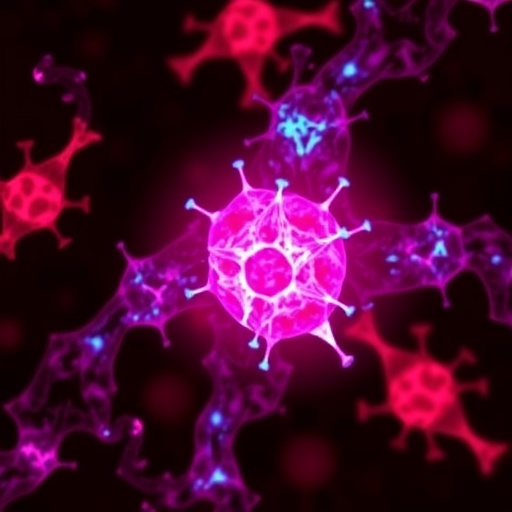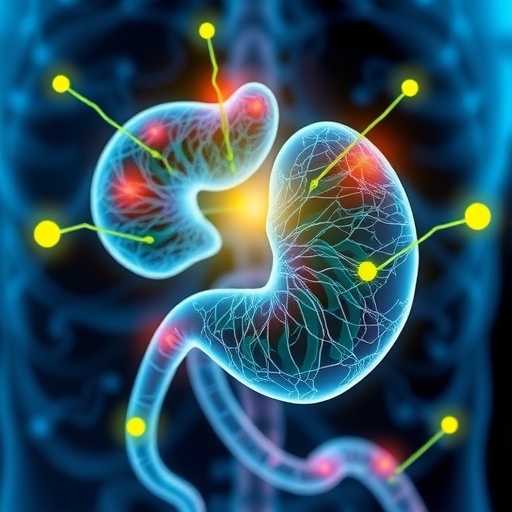A groundbreaking study recently published in Science China Life Sciences unveils critical advances in tumor-infiltrating lymphocyte (TIL) therapy for ovarian cancer, a disease that has long posed significant treatment challenges. While TIL therapy has gained regulatory approval for melanoma, its application in ovarian cancer remains under rigorous investigation. This new research illuminates the cellular and molecular underpinnings driving effective TIL expansion, potentially ushering in a new era of personalized immunotherapy for ovarian cancer patients.
Central to the study is the identification and expansion of TCF7-expressing T cells, which exhibit robust autologous tumor reactivity. Utilizing paired single-cell RNA sequencing (scRNA-seq) and T cell receptor sequencing (TCR-seq), the investigators meticulously characterized the heterogeneity within patient-derived TIL populations. This paired analytical approach allowed the researchers to identify distinct TCF7-positive subpopulations that preferentially expand during the TIL production process, illuminating potential therapeutic targets.
Among the T cell subpopulations, three stood out for their tumor reactivity and selection during ex vivo culture: CD8-positive TCF7-positive precursor exhausted T cells (Tpex), TCF7-positive GZMK-positive early effector memory T cells (Tem), and CD4-positive TCF7-positive T follicular helper (Tfh) cells. Notably, the CD8+ Tpex subset demonstrated self-renewal capabilities and the ability to differentiate into stem-like progeny, suggesting a pivotal role in sustaining long-term antitumor immunity once reinfused into the patient.
.adsslot_BEILOvXiJy{ width:728px !important; height:90px !important; }
@media (max-width:1199px) { .adsslot_BEILOvXiJy{ width:468px !important; height:60px !important; } }
@media (max-width:767px) { .adsslot_BEILOvXiJy{ width:320px !important; height:50px !important; } }
ADVERTISEMENT
The implications of these findings are profound for immunotherapeutic strategies, as the persistence and functionality of infused TILs are critical determinants of durable clinical responses. The study further highlights CCR7 and CD200 as essential co-markers that identify tumor-reactive T cells possessing optimal therapeutic potential. Cells simultaneously expressing CCR7 and CD200 were found to enrich the TIL product with stem-like qualities, which could translate into enhanced persistence and tumor specificity in vivo.
By isolating and targeting the CCR7+CD200+ T cell subset, there is a tangible opportunity to refine and potentiate TIL therapy protocols. This selective enrichment strategy could overcome current limitations in TIL therapy persistence and specificity, addressing a pivotal hurdle in the treatment of ovarian cancer. Such advancements could elevate the efficacy of TIL therapies beyond melanoma, extending their benefits to ovarian cancer patients with historically poor prognoses.
This study’s methodology leveraged cutting-edge single-cell technologies, enabling a high-resolution dissection of the tumor microenvironment’s immune landscape. The pairing of scRNA-seq with TCR-seq provided a dual perspective: gene expression profiles alongside antigen receptor clonality and specificity. This holistic view was indispensable in discerning the nuanced differentiation states and functional hierarchies within TIL populations.
Moreover, the identification of TCF7 as a biomarker of stem-like qualities within TILs aligns with emerging paradigms in T cell biology. TCF7, a transcription factor associated with memory T cell differentiation, plays a pivotal role in maintaining T cell self-renewal and multipotency. Its expression within tumor-reactive lymphocytes underscores the importance of preserving these stem-like characteristics to sustain antitumor immune responses long-term.
The expansion of these TCF7-expressing subpopulations during TIL production also raises intriguing questions about the ex vivo culture conditions. Understanding the molecular and environmental cues that drive selective proliferation could inform protocol optimizations that maximize the yield of therapeutically valuable T cell subsets. This precision cultivation approach promises to augment the functional potency of the final TIL infusion product.
Overall, this research marks a significant leap forward in the conceptual and practical framework of TIL therapy for ovarian cancer. It offers a clear roadmap for the development of next-generation adoptive cell therapies that incorporate phenotypic and functional selection criteria. Such rational design is essential to translate preclinical discoveries into tangible patient benefits, particularly in a cancer type where immune-based therapies have lagged behind other malignancies.
The translational potential of discerning CCR7+CD200+ tumor-reactive T cells cannot be overstated. By enriching for these populations, future clinical protocols might not only improve response rates but also achieve more sustained remissions, minimizing relapse risk. These findings align with the broader immunotherapy goal of producing memory-like T cells that exhibit resiliency and adaptability within the immunosuppressive tumor microenvironment.
As ovarian cancer remains a leading cause of gynecological cancer mortality, innovative approaches such as these offer hope for improving clinical outcomes. The detailed characterization and selective expansion of tumor-specific TILs provide a beacon for personalized medicine strategies, tailoring treatments to the unique immune landscape of each patient’s tumor.
In summary, this study encapsulates the intersection of advanced single-cell profiling, immunology, and cellular therapy innovation. It underscores the essentials of TIL heterogeneity, stem-like T cell biology, and phenotypic marker-based selection in refining adoptive cell therapies. These insights not only enrich our understanding of ovarian cancer immunobiology but also chart a course for more effective and durable immunotherapies that could redefine the standard of care.
Subject of Research: Tumor-Infiltrating Lymphocyte Therapy for Ovarian Cancer
Article Title: Identification and Expansion of Tumor-Reactive TCF7+ T Cell Subpopulations in Ovarian Cancer for Enhanced TIL Therapy
Web References: 10.1007/s11427-025-2958-3
Keywords: Tumor-infiltrating lymphocytes, TIL therapy, ovarian cancer, TCF7, CCR7, CD200, single-cell RNA sequencing, TCR sequencing, precursor exhausted T cells, immunotherapy, stem-like T cells, adoptive cell therapy
Tags: CD8-positive TCF7-positive T cellsearly effector memory T cells in cancer therapyexhausted T cell subpopulationsovarian cancer immunotherapy advancespersonalized immunotherapy for ovarian cancersingle-cell RNA sequencing in cancer researchstem-like T cell progeny differentiationT cell receptor sequencing for tumor analysisTCF7-positive tumor-reactive T cellstherapeutic targets in ovarian cancertumor reactivity in TIL populationstumor-infiltrating lymphocyte therapy





